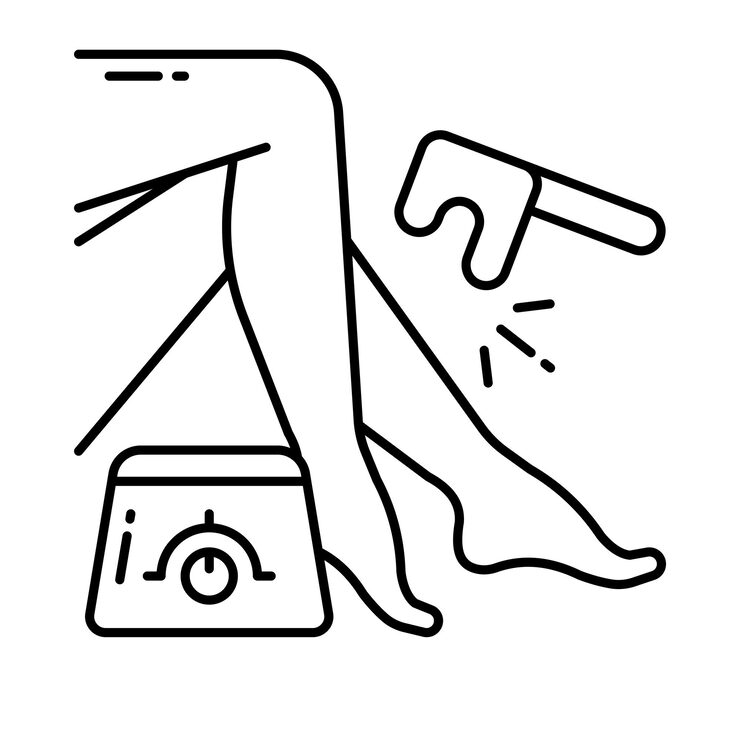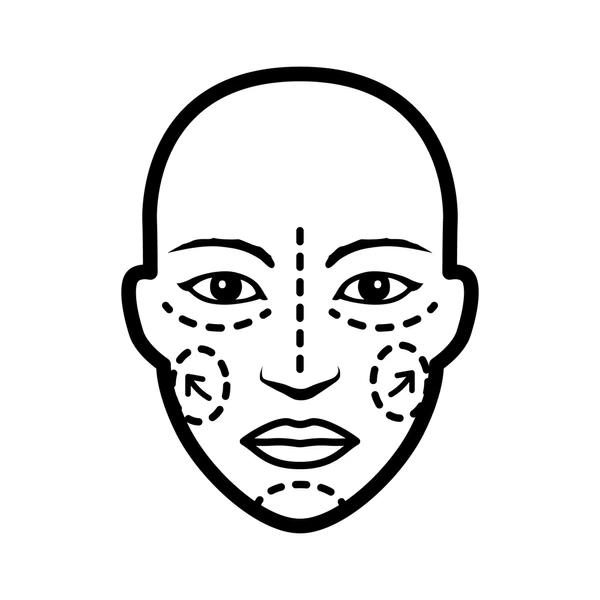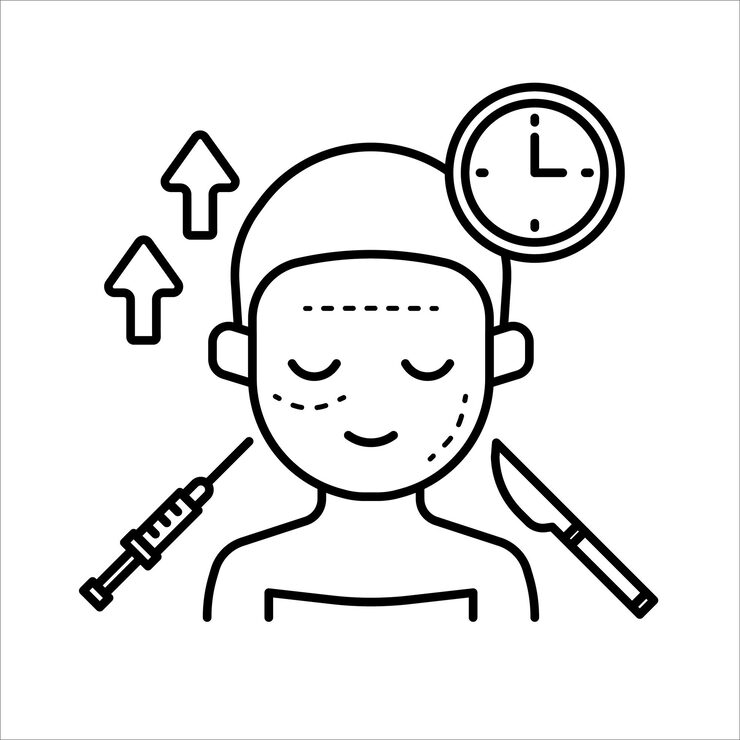Medical Expertise Meets Aesthetic Precision—for Every Stage of Acne
When it comes to acne scars, there is no one-size-fits-all solution. Patients arrive with deep, pitted scars from cystic acne; others have broad, shallow rolling scars or post-inflammatory pigmentation from older breakouts. Primary objective to srtat any type of treatment is first to identify the type, depth, and behavior of scars—and then build a plan that addresses patients needs precisely and set realistic expectations.
In terms of available options, the primary modalities used are either done individually or in combination, depending the goals, downtime tolerance, and skin type.
Treating Active Acne: Tailored to Your Stage and Type
Acne is not a one-size-fits-all condition. We assess each case based on type (comedonal, inflammatory, cystic) and severity (mild to severe), and build treatment plans accordingly. Our toolbox includes:
- Topical prescription therapies like benzoyl peroxide, clindamycin, topical antibiotics, tretinoin, and Tazorac® for comedonal and inflammatory acne
- Oral antibiotics such as doxycycline or minocycline for moderate to severe inflammatory acne
- Hormonal acne treatment using spironolactone or oral contraceptives for female patients with hormonal fluctuations
- Isotretinoin (Accutane®) for resistant or cystic acne, prescribed with close monitoring
For more immediate relief of inflamed lesions or nodules, we also perform cortisone (Kenalog) injections to rapidly flatten cystic acne and prevent scarring.
We also treat teenage acne, which often arises from hormonal shifts and overactive sebaceous glands. Treatment plans for teens typically involve gentle yet effective topical regimens, lifestyle guidance, and early intervention with oral medications or in-office treatments to prevent long-term scarring.

Advanced Cosmetic Solutions for Acne: Beyond Medication
Even with medical therapy, many patients benefit from cosmetic treatments that enhance clearance, reduce pigmentation, and prevent future breakouts. We offer:
Combination Therapy: Our Signature Approach
Acne scar correction is a journey—not a single session. We design phased treatment protocols that combine 2–3 modalities over time to address depth, tethering, pigment, and volume loss in a structured, medically sound way.
Examples of Protocols We Design:
- Subcision + CO2 + PRFM: For deep, tethered scars with pigment or poor wound healing
- RF Microneedling + Exosomes: For texture and inflammation in skin types IV–VI
- CO2 + Q-Switch: When there’s textural damage and pigmentation overlap
- TCA CROSS + Filler: To treat ice pick scars with adjacent rolling scars or contour loss
Each case is mapped out with photos, pre- and post-care, and follow-up built in. We review progress after each session and adjust your plan based on how your skin responds—not based on package deals or rigid timelines.
Additional Treatments offered are:
- HydraFacial® – medical-grade pore cleansing and exfoliation to support skin turnover and recovery
- Manual extractions – for comedones or closed cysts when clinically indicated
- SkinCeuticals peels – including Salicylic Acid Peel, TCA, Advanced Corrective Peel, and Pigment Correction Peel for resurfacing, tone improvement, and acne-prone skin

Fractional CO2 Laser (Fraxis Duo)
This is our preferred approach for deep, atrophic scars—especially boxcar and ice pick scars. It works by using fractionated ablative energy to vaporize columns of damaged skin, triggering the body to rebuild the dermis with fresh collagen.
We use the Fraxis Duo because it offers dual control of depth and density. This allows us to treat delicate areas like the cheeks or temples aggressively—without excessive downtime or pigment risk.
Patients typically need 3 to 5 sessions spaced 6–8 weeks apart for visible improvement. You can expect 5–7 days of redness, peeling, and tightness. In experienced hands, it is one of the most transformative scar treatments available.
This treatment is best for:
- Fair to medium skin tones (Fitzpatrick I–III)
- Thick, sun-damaged, or leathery skin
- Older scars resistant to microneedling or peels
For darker skin tones, we proceed with caution or pair with regenerative therapies like PRFM to reduce inflammation and risk of post-inflammatory hyperpigmentation.
RF Microneedling (Matrix PRO, Sublative, Secret PRO)
Radiofrequency microneedling is a cornerstone treatment we rely on for rolling scars, enlarged pores, and early laxity. These devices use fine needles to create micro-injuries while delivering thermal energy directly into the dermis—stimulating collagen without ablating the surface.
We often recommend RF microneedling for patients who:
- Have darker skin types (Fitzpatrick IV–VI)
- Cannot take time off for full CO2 recovery
- Want gradual improvement with minimal risk
We use different platforms (Matrix PRO for broad areas, Sublative for precision, Secret PRO for depth) depending on the patient’s scar pattern, thickness of skin, and sensitivity. A typical course is 3–4 treatments, spaced 4–6 weeks apart.
Downtime is minimal: 24–48 hours of redness, occasional flaking, and slight swelling. It is an excellent first-line or maintenance therapy for acne scars.
Salicylic Peel For Acne and Pigment
This patient arrived with mild to moderate acne and post-inflammatory hyperpigmentation, most noticeable along the cheek and jawline. A Customized Treatment Plan was developed using targeted exfoliation techniques to refine texture, suppress active breakouts, and lighten residual pigmentation. Over a series of treatments, the skin revealed a clearer, brighter tone with fewer blemishes and smoother overall surface quality. This approach is particularly well-suited for individuals with acne-prone or congested skin types seeking a non-invasive reset.

Q-Switch Laser (Curas)
Scars are not always just about texture. In many patients—especially those with Fitzpatrick IV–VI skin—post-acne pigmentation can be more distressing than the scars themselves.
The Q-Switch laser (we use the Curas platform) delivers ultrafast pulses that break up melanin clusters without damaging surrounding tissue. Unlike IPL, it is safe for darker skin types and can be used year-round.
Indications include:
- Post-inflammatory hyperpigmentation (PIH)
- Residual red or brown marks
- Uneven tone after active acne clears
Treatments are quick with no downtime, and results build over 3–6 sessions.
Subcision (With or Without Filler)
Many rolling scars are caused not just by volume loss—but by fibrotic tethers anchoring the skin down. These scars will not respond to lasers alone. That’s where subcision comes in.
During subcision, we use a specialized cannula or Nokor needle to gently release the scar tissue beneath the surface, allowing the skin to lift and remodel.
In many cases, we pair subcision with:
- PRFM, to stimulate healing and reduce bruising
- HA filler, to support the released tissue and restore contour
- CO2 laser, 6–8 weeks later, for textural refinement
Bruising is common and usually lasts 5–10 days. Results are often immediate—but continue to improve over time as the skin revascularizes and regenerates.
PRFM & Exosomes (Regenerative Biologics)
These therapies play a critical role in healing, collagen synthesis, and inflammation control—especially in patients with melanin-rich skin or poor wound healing.
- PRFM (Platelet-Rich Fibrin Matrix): Harvested from your own blood, spun at low speed to retain white cells and fibrin scaffold, offering stronger and longer-lasting effects than PRP.
- Exosomes (AnteAGE or Benev): Lab-derived growth factor vesicles that stimulate fibroblasts and reduce post-treatment inflammation.
We often apply these:
- Post-CO2 or microneedling for accelerated recovery
- After subcision to support healing
- As a solo series for patients who want non-invasive options
You will not see a “filler” effect with these therapies—but you will notice improvement in tone, inflammation, and collagen density over time.

Dermal Fillers (Restylane, Belotero, or PRFM Blend)
For scars that involve volume loss—whether from inflammation or subcision—we use dermal fillers to lift and smooth the surface. We choose low-viscosity fillers that integrate well into the dermis and do not leave visible edges or nodules.
Common uses include:
- Rolling scars with central depression
- Cheek contour defects from long-standing cystic acne
- Support after subcision, to prevent retethering
In some cases, we use PRFM-enriched filler blends, which combine hyaluronic acid with platelet-rich fibrin matrix to enhance both volume and regenerative signaling.
Filler results are visible immediately and may last 12–18 months, with optional top-ups based on response.
TCA CROSS
TCA CROSS (Chemical Reconstruction of Skin Scars) is one of the few treatments that reliably improves ice pick scars—those narrow, deep, stubborn pits that seem impossible to smooth.
We apply a high-strength 70–100% trichloroacetic acid directly into the base of each scar using a fine applicator. This causes controlled chemical injury, which stimulates collagen within the scar walls.
This treatment is not about peeling the surface—it’s about rebuilding from within. It’s especially useful for:
- Patients with ice pick scars who aren’t ready for CO2
- Areas that lasers may not fully reach
- Patients seeking targeted, low-downtime solutions
Downtime is usually 5–7 days of pinpoint scabbing. We typically recommend 3–4 sessions for optimal results.
Acne Scarring: Proven Methods Backed by Dermatologic Science
Once active acne resolves, many patients are left with textural scarring. We identify scar types and treat accordingly:
- Boxcar and rolling scars – treated with fractional CO2 laser, subcision, and Sublative™ RF resurfacing (Candela), FDA-approved for acne scar revision
- Ice pick scars – treated with TCA CROSS, microneedling, or fractional laser
- Tethered or deep scars – released using subcision, often followed by fillers or regenerative treatments
- Volume loss – corrected with dermal fillers such as Restylane®, Bellafill®, or a PRFM + HA blend
- Regenerative support – exosomes and PRFM are integrated post-procedure to enhance collagen production and speed healing
- Microneedling with exosomes – enhances scar texture, reduces pore size, and promotes natural collagen regeneration
- Secret PRO and Matrix PRO – advanced RF microneedling and fractional technologies used for deep resurfacing and long-term scar improvement
Each plan is customized based on scar type, skin tone, and prior treatment history.

Who Is It For?
We treat:
- Teens, young adults, and adults with active or hormonal acne
- Teenage acne with early-onset hormonal changes and sebaceous activity
- Post-inflammatory pigmentation and scarring
- Patients with skin of color or sensitive skin requiring safe, customized protocols
- Individuals with prior scarring seeking combination therapy or regenerative correction

What to Expect During Treatment
Your scalp is gently cleansed and numbed for comfort. Exosomes—regenerative signaling molecules—are then applied via microneedling or injected directly into targeted scalp areas experiencing thinning. The entire process typically takes 45 to 60 minutes. Most patients find the procedure well-tolerated and relatively painless. You’ll be able to drive yourself home afterward and resume normal activities later that day.

Downtime & Recovery
There’s minimal downtime. You may experience mild redness, swelling, or scalp tenderness that resolves within 24 to 48 hours. Hair can usually be shampooed the next day. Topical growth serums may be reintroduced after 48 hours to boost ongoing results. Avoid harsh styling products, saunas, or heavy sweating for 2–3 days post-treatment.

When Will I See Results?
- Early shedding may reduce within 3–4 weeks
- Noticeable hair thickening and scalp coverage improvements are typically visible at 8 to 12 weeks
- Peak results are often seen between 4 to 6 months
- With proper maintenance (e.g., topical support or repeat sessions every 6–12 months), results may continue to evolve and stabilize long-term
Recommended Maintenance & Long-Term Skin Health
Acne-prone and scar-prone skin benefits from long-term maintenance. We recommend:
- HydraFacial MD® every 4–6 weeks for prevention and texture improvement
- Nordlys IPL or Q-Switch laser for pigment and tone maintenance
- Medical-grade skincare using prescription formulations or trusted brands like SkinCeuticals

Results & Timeline
Medical acne therapies may show improvement within 6–12 weeks. Scar remodeling with lasers, microneedling, or subcision takes 3–5 sessions, spaced monthly, with full collagen remodeling continuing for up to a year. Regenerative treatments like exosomes help improve healing and minimize downtime.
Who performs the procedure?
All acne treatments are physician-directed and customized by Dr. Sabeen Munib. In-office procedures are performed by licensed medical aestheticians under her direct supervision.

Why Choose Spectrum Skin Clinic?
All acne and scar care is directed by Dr. Sabeen Munib, whose expertise in both medical dermatology and aesthetic treatments ensures that your care is safe, evidence-based, and strategically designed. We don’t simply treat breakouts—we build long-term plans for skin confidence.

Frequently Asked Questions
Got questions? We’re here to help! Find out what we offer, how to book an appointment, where we’re located, and more. We treat all age groups and offer skincare products too.
